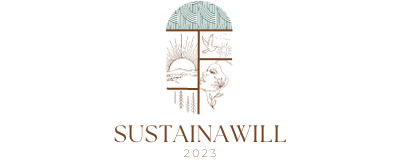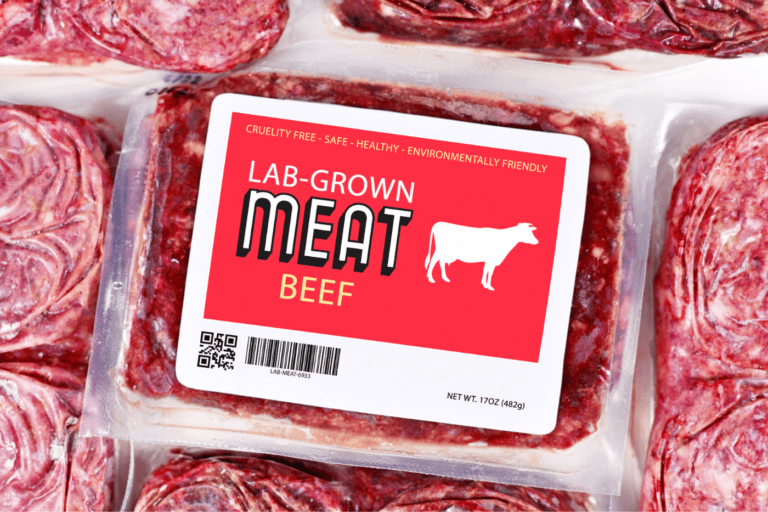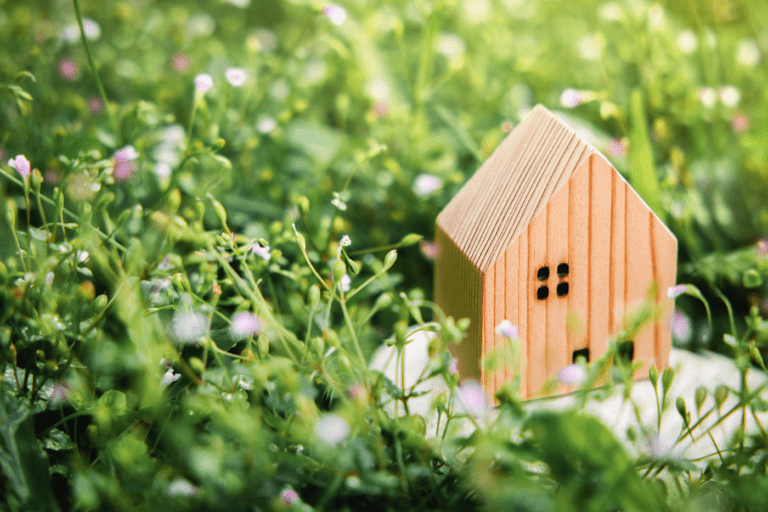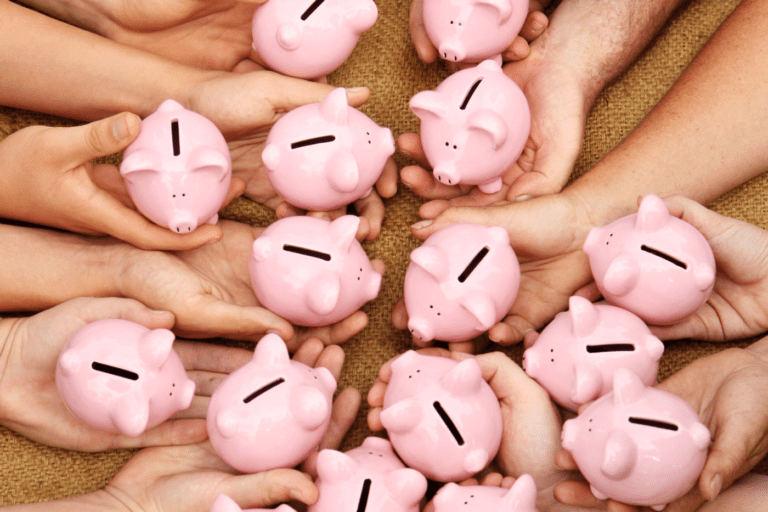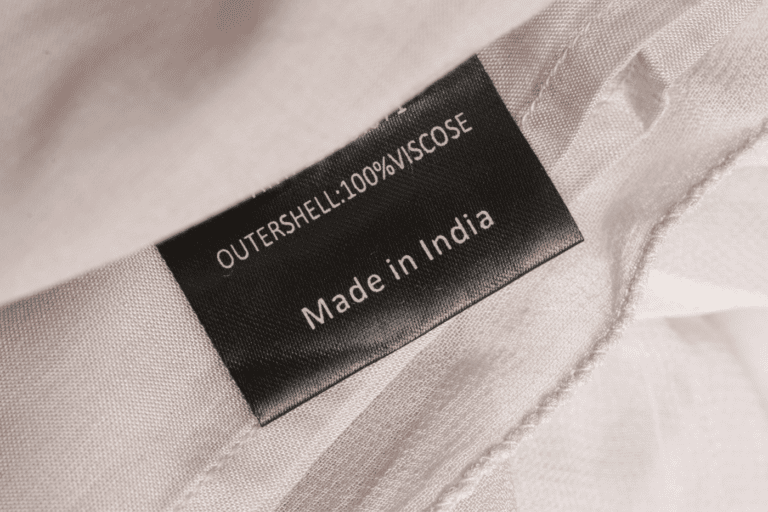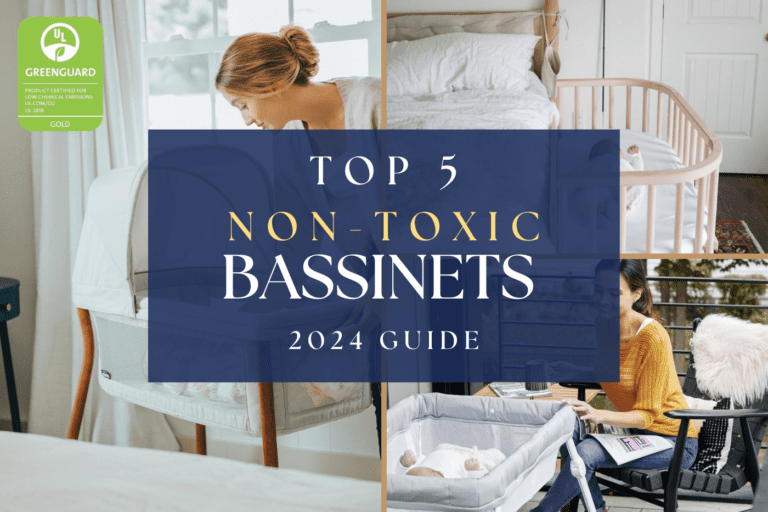In the vast world of fashion, rayon is a fabric known for its versatility and comfort, making it a frequent guest in your wardrobe. But have you ever stopped to think about its journey from tree to t-shirt and its environmental impact?
Especially within the realm of fast fashion, where trends come and go in the blink of an eye, rayon often takes center stage. It’s an integral part of the fashion industry, offering style at an affordable price.
However, what’s hidden behind those racks of rayon garments is a story that we can’t ignore – one that raises important questions about our fashion choices and their moral implications.
Let’s dive in and see how sustainable Rayon really is!
What Is Rayon Fabric?
Rayon is a group of fibers made from processed plant material. It includes types like Viscose Rayon, Modal, and Tencel (Lyocell). These types have their own special qualities and how they’re made can be different.
Rayon’s Qualities
Rayon fabric is a fascinating material that beautifully bridges the gap between natural and synthetic fibers. Here’s what you need to know about it:
- Nature’s Touch: Rayon is often referred to as “artificial silk” because it can mimic the softness and drape of natural silk. It’s a textile that feels great against your skin.
- Roots in Nature: Despite being categorized as a semi-synthetic fiber, it’s origins are firmly planted in the natural world. It’s made from cellulose, a natural polymer found in plant cell walls.
- Versatile and Breathable: Rayon is celebrated for its versatility. It can be crafted into various textures, from smooth and shiny to soft and matte, making it suitable for a wide range of clothing, from elegant dresses to casual t-shirts.
- Eco-Friendly Potential: The production of Rayon has the potential to be eco-friendly when sourced from sustainable forests and processed with care. However, not all Rayon is created equal, so it’s essential to look for sustainable options.
- Wearable Comfort: One of Rayon’s standout qualities is its breathability. It’s perfect for warm weather because it allows air to circulate, keeping you cool and comfortable.
- Vibrant Colors and Patterns: Rayon readily accepts dyes, resulting in rich, vibrant colors and intricate patterns. So, if you love eye-catching designs, this fabric might be your ideal canvas.
- Easy to Care For: Rayon garments are typically easy to care for. Most can be machine-washed, which adds a practical touch to their allure.
In a nutshell, Rayon is a versatile, comfortable, and potentially eco-friendly fabric with a wide range of applications in the fashion world.

How Sustainable is Rayon REALLY?
It’s a mixed bag! Rayon’s sustainability depends on various factors.
While it’s derived from natural cellulose, it undergoes processing that can sometimes involve less eco-friendly methods. So, the verdict isn’t a simple “yes” or “no.”
- Sourcing Matters: The origin of the wood pulp used to create Rayon is a crucial element. ‘’Sustainable Rayon’’, like Tencel (a specific brand of Rayon), is often sourced from certified forests, which is a big win for sustainability.
- Production Processes: Traditional Rayon manufacturing has been criticized for its use of harmful chemicals. However, eco-friendly advancements, like closed-loop production systems, are minimizing these concerns.
- Water and Energy Use: Some Rayon production can be quite resource-intensive. Sustainable practices aim to reduce water and energy consumption, making rayon production more environmentally friendly.
- Biodegradability: Here’s a bright side: Rayon is biodegradable. This means it can break down naturally over time, unlike synthetic fibers like polyester that stick around for ages.
- Consumer Role: How you care for your Rayon garments plays a part in their sustainability. Washing with care, avoiding over-washing, and recycling clothing can extend their lifespan.
- Eco-Friendly Alternatives: If you’re on a quest for sustainability, you might want to opt specifically for Tencel Rayon. Or consider other alternatives like organic cotton or hemp. These fabrics often come with stronger eco-friendly credentials.
In essence, the sustainability of rayon is a spectrum.
Sustainable sourcing, eco-friendly production, and thoughtful consumer choices are the keys to making it a more eco-conscious option. It’s a fabric with a lot of potential, and with the right choices, it can be part of a greener, more sustainable fashion future. Especially when we look at the very promising TENCEL.
Eco-Friendly Tencel: ‘The Sustainable Rayon’
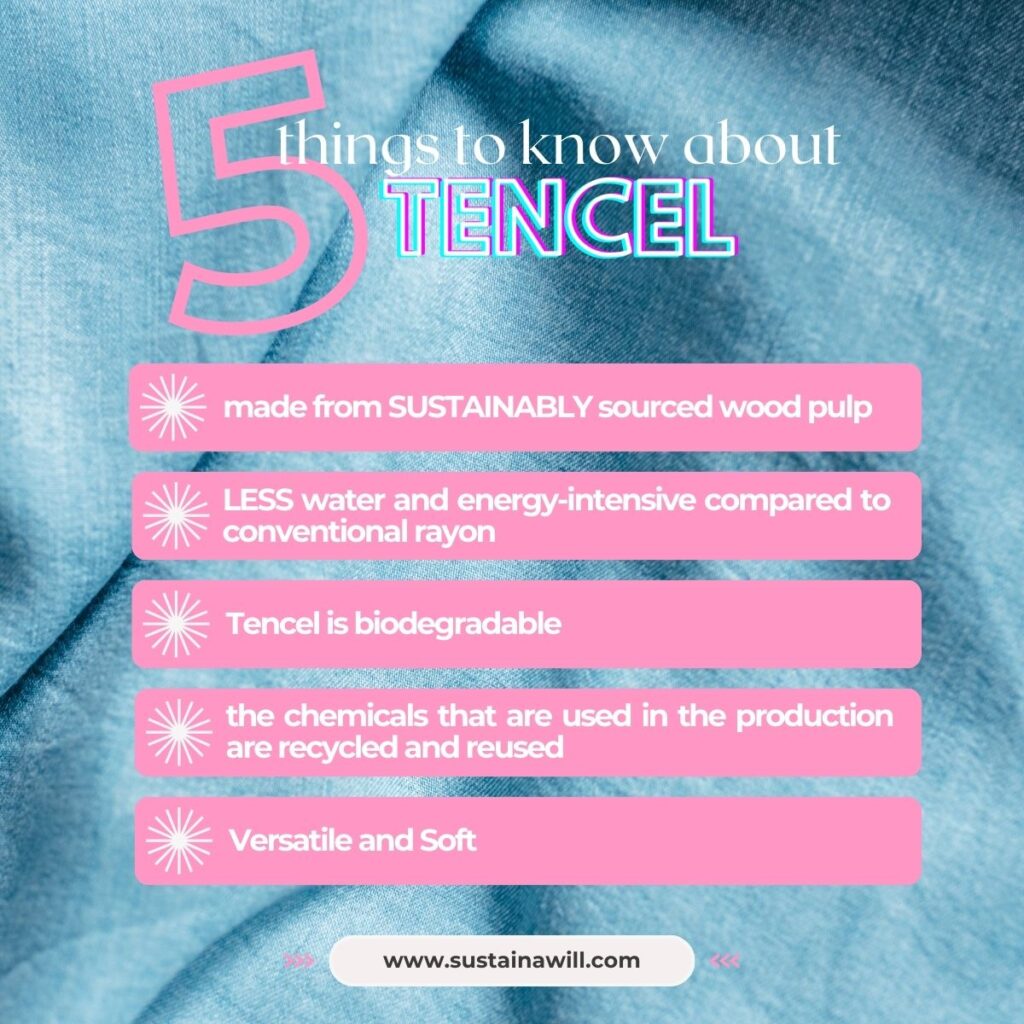
You’re in for a treat, eco-conscious explorers, as we unveil the green credentials of Tencel, often hailed as ‘The Sustainable Rayon.’ Let’s dive into how Tencel redefines rayon with its commitment to environmental responsibility:
What is Tencel?
Tencel is a specific brand of Rayon. Rayon is a generic term that encompasses various types of fibers made from cellulose, typically derived from wood pulp. Tencel, on the other hand, is a brand name for a type of rayon that is produced in a more environmentally sustainable manner.
Traditional Rayon:
Often referred to as viscose rayon, involves a process that can be harmful to the environment due to the use of harsh chemicals and the discharge of pollutants into waterways.
Tencel (Lyocell) Rayon:
Tencel is a type of Rayon known as Lyocell. The production of Tencel uses a closed-loop process, which significantly reduces the environmental impact.
In this closed-loop system, the chemicals used to break down the wood pulp into fibers are recycled and reused, minimizing waste and pollution.
The Key Difference Lies in the Production Process:
- The Closed-Loop Process: Tencel’s secret sauce lies in its production process. Unlike traditional Rayon, which can be a bit heavy on the environment, Tencel uses a closed-loop system. This means the chemicals used to transform wood pulp into fibers are recycled and reused. It’s a big win for sustainability!
- Sustainably Sourced Wood Pulp: The journey to Tencel begins with sustainably managed forests. The wood pulp used is often derived from certified sources, reducing the environmental impact right from the start.
- Reduced Resource Consumption: Tencel production is less water and energy-intensive compared to conventional Rayon. Less resource consumption means a greener footprint.
- Biodegradable Beauty: Just like traditional Rayon, Tencel is biodegradable. It doesn’t linger in landfills for centuries like synthetic fabrics.
- Versatile and Soft: Tencel retains the softness and versatility of Rayon, making it a popular choice for clothing items that you’ll adore wearing.
In a world that’s increasingly eco-conscious, Tencel shines as a Rayon with a commitment to sustainability. So, the next time you spot ‘Tencel’ on a clothing label, you’ll know you’re not just wearing Rayon; you’re embracing ‘The Sustainable Rayon,’ a choice that’s friendly to both your style and the planet.
Tencel Rayon vs. Natural Fibers: A Sustainability Comparison
Let’s dive into the sustainability arena, shall we? It’s time to explore how Tencel Rayon stacks up against the reigning champions of the textile world – natural fibers:
Tencel vs. Cotton: A Sustainability Face-Off
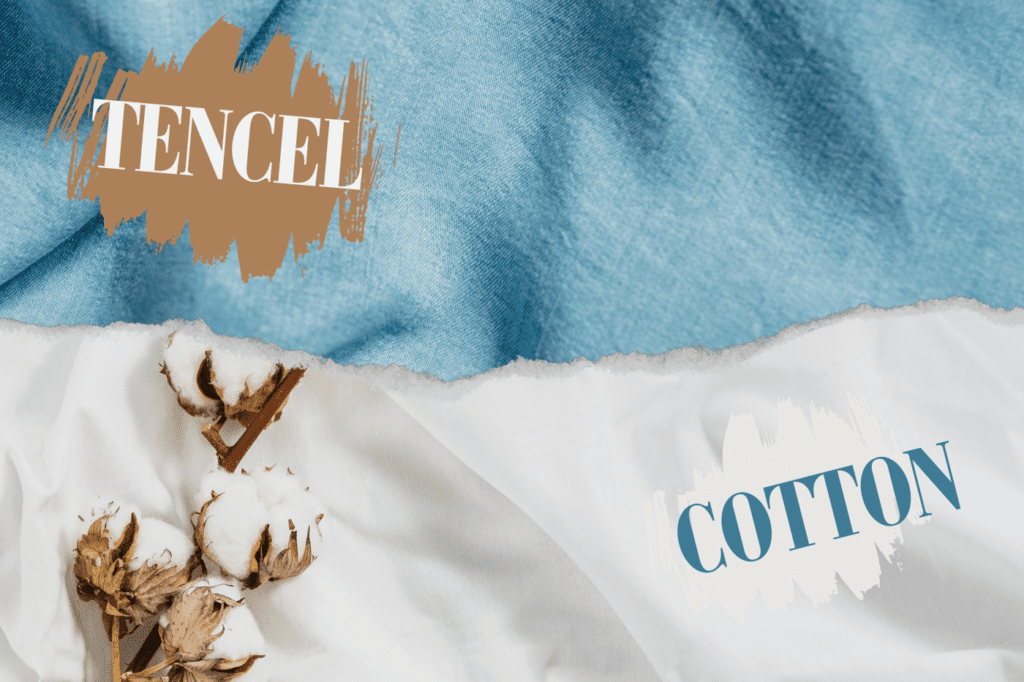
In the battle for sustainability, who emerges victorious? Let’s pit Tencel against the reigning champion, cotton:
Water Usage:
Winner: Tencel. Tencel’s production is less water-intensive than traditional cotton.
Chemical Usage:
Winner: Tencel. Tencel’s closed-loop process minimizes chemical use, while cotton often relies on pesticides.
Biodegradability:
Draw. Both Tencel and cotton are biodegradable.
Overall Winner:
Tencel takes the crown in this matchup for its eco-friendlier production methods and reduced chemical usage.
Tencel vs. Hemp: An Eco-Friendly Clash
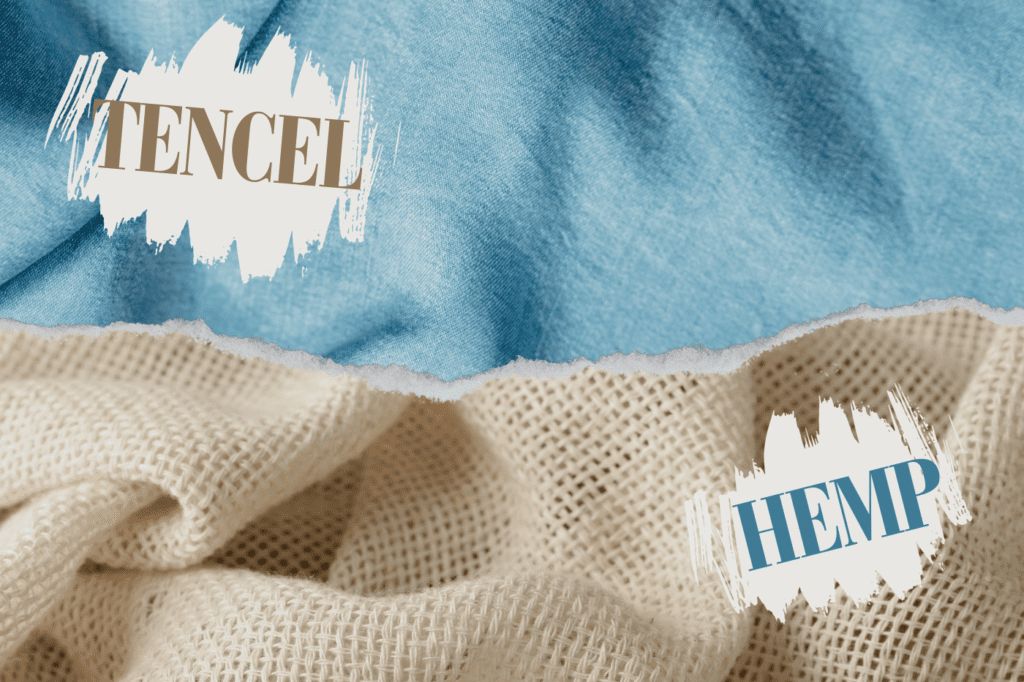
Now, it’s Tencel vs. hemp in an eco-friendliness showdown:
Resource Efficiency:
Winner: Hemp. Hemp is known for its low resource requirements.
Versatility:
Winner: Tencel. Tencel combines eco-friendliness with softness and versatility.
Biodegradability:
Draw. Both Tencel and hemp are biodegradable.
Overall Winner:
That’s a win for both sides. Hemp excels in resource efficiency, but Tencel’s versatility and eco-conscious production make it a strong all-rounder.
Tencel vs. Linen: The Breathability Battle
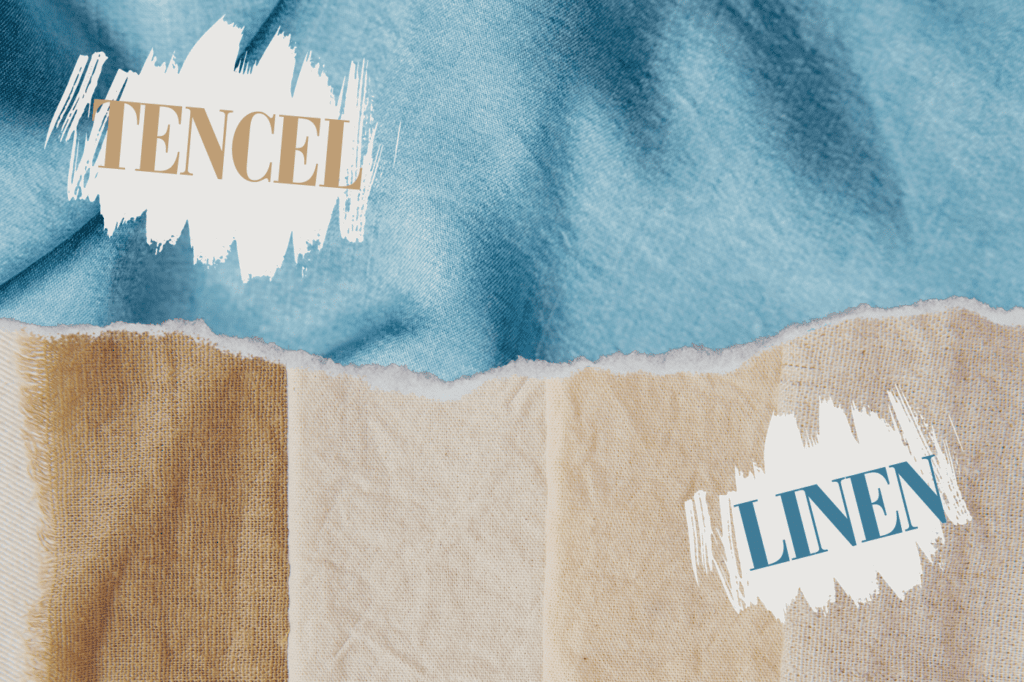
Tencel takes on linen, another natural fiber known for its breathability:
Wrinkle Resistance:
Winner: Tencel. Tencel is often more wrinkle-resistant than linen.
Environmental Impact:
Winner: Tencel. Its eco-friendly production gives it an edge.
Biodegradability:
Draw. Both Tencel and linen return to nature.
Overall Winner:
Tencel’s knack for resisting wrinkles and its environmentally conscious production make it a preferred choice for those seeking a balance between eco-friendliness and style.
Fashion and Rayon: The Role of Consumer Choices
Let’s talk about the power you hold as a consumer in shaping the sustainability of rayon fabric:
- Quality Over Quantity: Choosing well-made, durable rayon garments over disposable fast fashion is a significant step toward sustainability. Quality pieces have a longer lifespan.
- Careful Washing: Washing your rayon items with care, using cold water and gentle cycles, can extend their life and reduce your environmental footprint.
- Recycling and Upcycling: When it’s time to part with a rayon garment, consider recycling or upcycling it. Turning old clothes into new items or recycling them minimizes waste.
- Sustainable Brands: Supporting brands that prioritize sustainability in their rayon production sends a strong message to the fashion industry.
- Certified Rayon: Seek out rayon products made from sustainably sourced wood pulp and processed in eco-friendly ways, like Tencel.
- Awareness and Education: Educate yourself about rayon and its environmental impact. The more informed you are, the better choices you can make.
- Voice Your Values: Share your sustainability values with brands and let them know you care about eco-friendly rayon options.
By making thoughtful choices and supporting eco-conscious brands, you’re not just a fashion consumer; you’re a fashion influencer. Your choices matter, and they have the potential to drive positive change in the world of rayon fashion.
FAQs: Everything You Wondered About Rayon
What is Rayon, and Is It a Natural Fiber?
Rayon is a semi-synthetic fiber made from natural cellulose, typically sourced from wood pulp. It’s often considered a “man-made natural fiber.”
How Sustainable is Rayon?
Rayon’s sustainability varies depending on factors like sourcing and production methods. Types like Tencel (Lyocell) and Modal are celebrated for their more eco-friendly processes.
What are the Subtypes of Rayon, and How Do They Differ?
Rayon subtypes include Modal and Tencel (Lyocell). Modal is known for its softness and breathability, while Tencel stands out for its closed-loop production process.
Is Rayon Biodegradable?
Yes, rayon is biodegradable. It naturally decomposes over time, unlike synthetic fibers that can persist in landfills.
Is Rayon Similar to Silk or Cotton?
Rayon often mimics the qualities of natural fibers like silk and cotton, offering softness, breathability, and versatility.
What’s the Difference Between Tencel and Traditional Rayon?
Tencel is a type of rayon with a more eco-friendly closed-loop production process, reducing its environmental impact.
Can Rayon Be Recycled?
Rayon can be recycled, but the availability of recycling programs may vary. Efforts are ongoing to increase the recycling of rayon textiles.
Is Rayon More Environmentally Friendly Than Synthetic Fabrics?
Generally, Rayon is considered more eco-friendly than synthetic fabrics like polyester. However, its sustainability depends on various factors, including sourcing and production practices.
How Can I Care for My Rayon Garments?
To prolong the life of your Rayon clothes, follow care instructions carefully. Hand-washing or using a gentle cycle and avoiding excessive heat in the dryer can help maintain their quality.
Where Can I Find Sustainable Rayon Clothing?
Look for sustainable fashion brands that prioritize eco-friendly production methods and materials, including Tencel and Modal Rayon.
These FAQs aim to provide you with a comprehensive understanding of rayon and its various aspects, including its subtypes and sustainability considerations.
Conclusion: Rayon Fabric’s Sustainability in the Modern World
In conclusion, the future of rayon in sustainable fashion is in our hands:
- Eco-Friendly Alternatives: The rise of eco-conscious rayon varieties,(Tencel, we are lookin’ at you babe!), shows promise.
- Consumer Influence: Your choices and preferences have the power to encourage the fashion industry to embrace sustainable practices.
- A Greener Tomorrow: By selecting quality, sustainable rayon, and supporting circular fashion, you contribute to a more eco-friendly fashion landscape.
Embrace rayon as a fabric with potential, and let your fashion choices be a part of the solution. Together, we can weave a sustainable future for rayon in the modern world.

